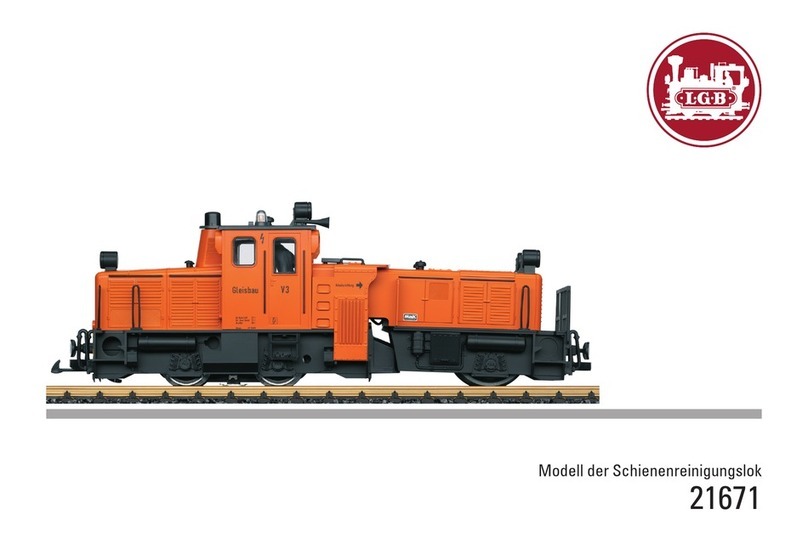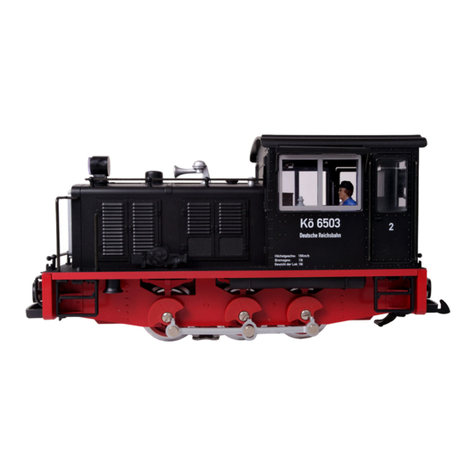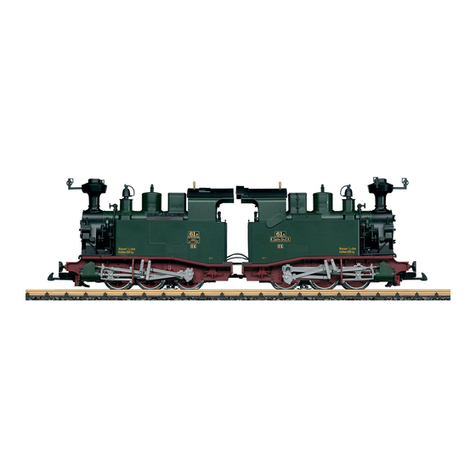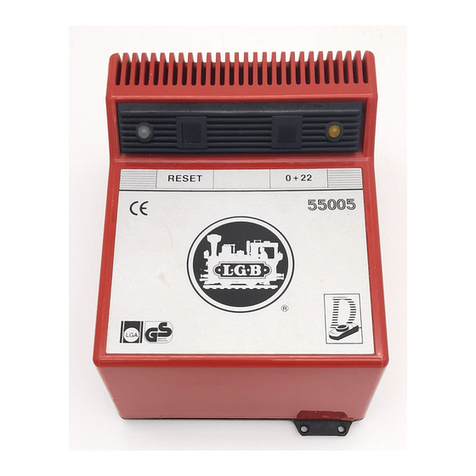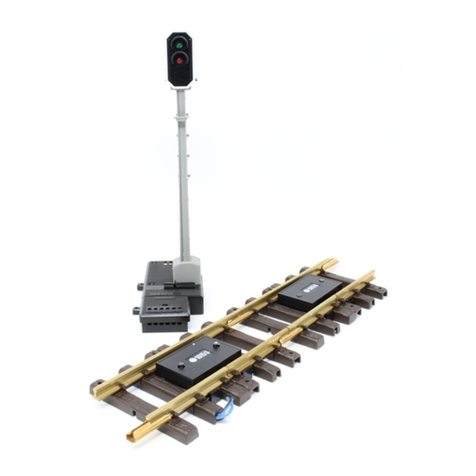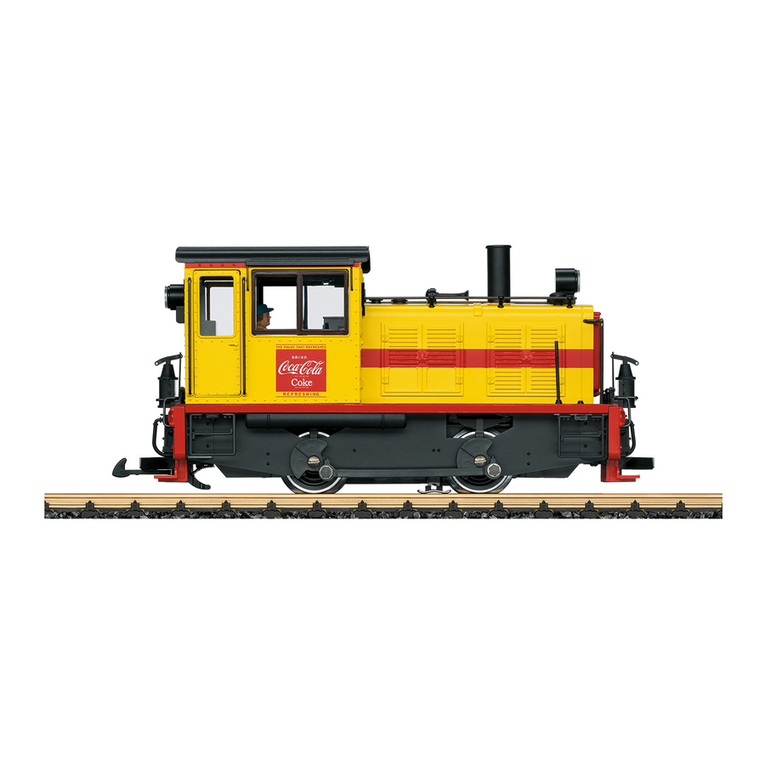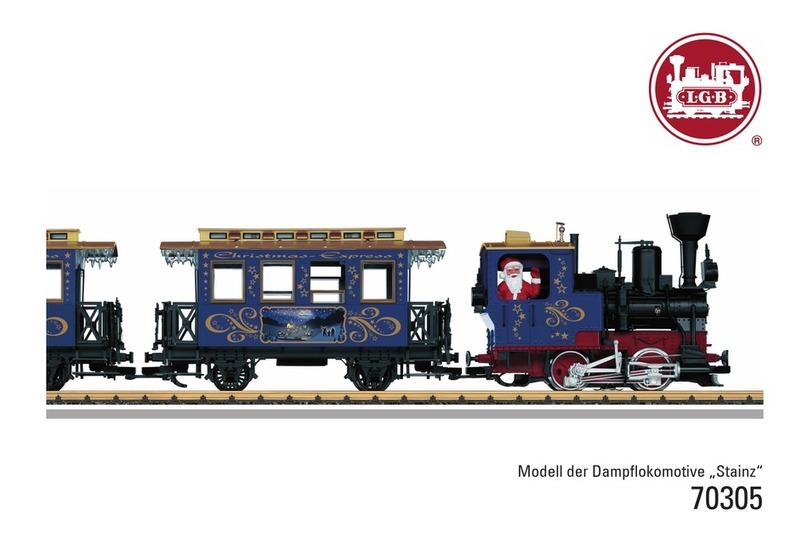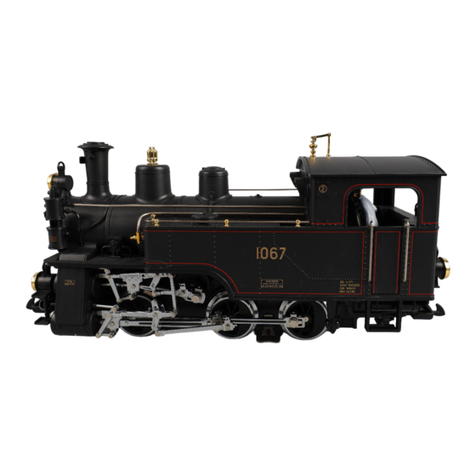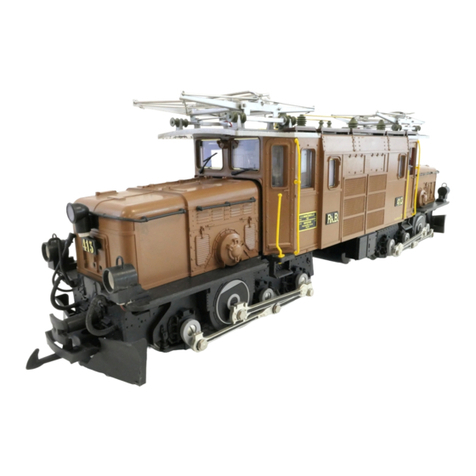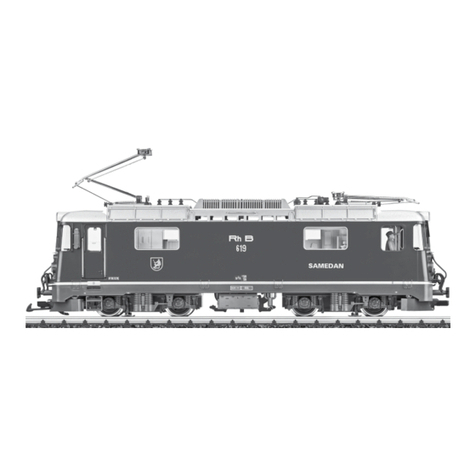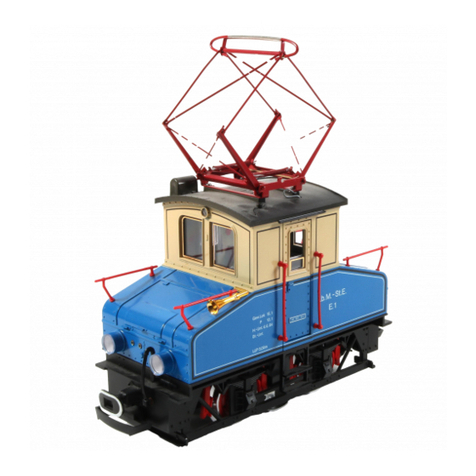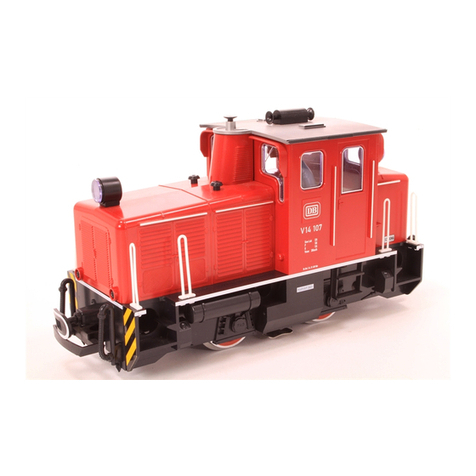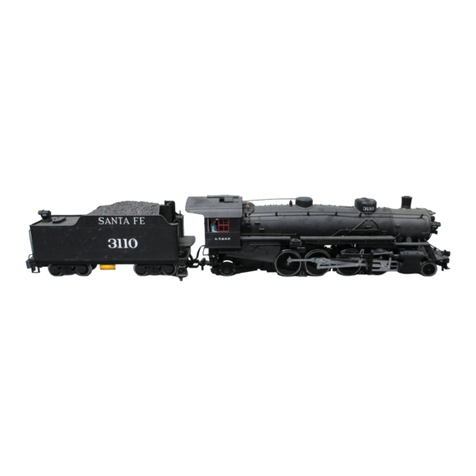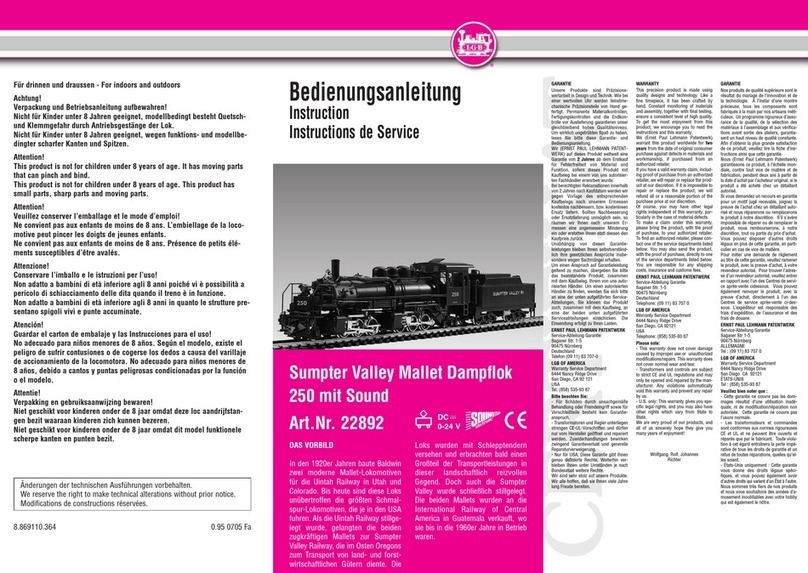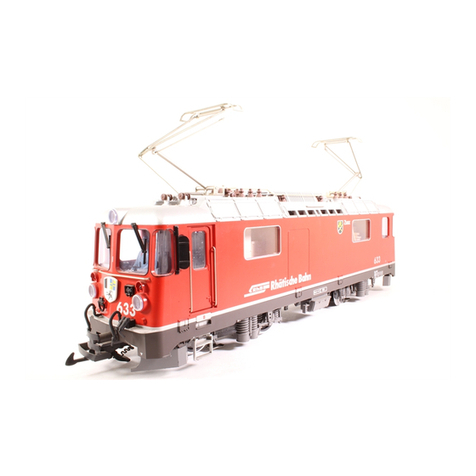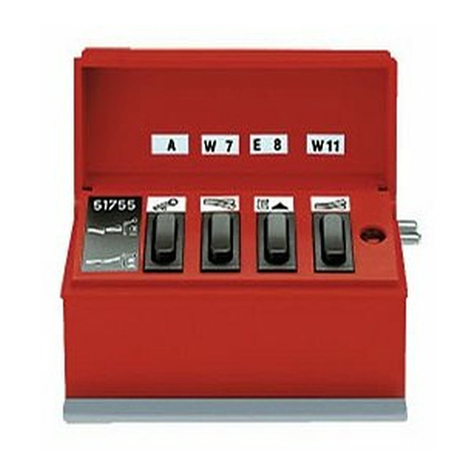
2
Der Ersatz-Schornstein 2015/4
mit eingebautem Rauchgenerator für Dampflok 2017 D.
Die Packung enthält zusätzliche Kleinteile, die einen
nachträglichen Umbau nichtrauchender Loks ermög-
lichen.
Einbau-Anleitung
Der Einbau des Dampfschornsteins in eine Lok ist
einfach, erfordert aber ein Lötgerät. Wenn man – der
Montageanleitung folgend – das Gehäuse demontiert
(Herausdrehen des Schornsteins, Lösen diverser
Schrauben, Herausziehen der Frontkupplung und
Ausklinken nach der Seite der beiden Halterungen
des Gestängebügels), hat man das Fahrgestell in der
Hand. Dieses trägt auf der Oberseite vorn und hinten
je 2 Kontaktlaschen aus Messing, die die beiden
Strompole führen.
An die vorn in Fahrtrichtung gesehen linke Lasche
wird die dem Umrüstsatz beigegebene Litze verlötet,
die Litze in der Nut nach unten geführt und das
andere Ende unter die neue, längere Schraube zur
Halterung des vorderen Schienenräumers gewickelt.
Darüber kommen noch eine Unterlegscheibe und der
Schalthebel.
An die rechte Kontaktlasche auf dem Fahrgestell
wird dann der beigegebene Bronze-Bügel gelötet,
nachdem man dessen anderes Ende in das Schorn-
steinloch im Fahrgestell gesteckt hat. Damit ist der
Rücklauf des Stromes vom Metallschaft des Schorn-
steines gesichert.
Spare Smoke Generator 2015/4
for locomotive 2017 D. The package includes some
additional parts which make it possible to convert the
non-smoking locomotives into a smoking locomotive.
Assembly instructions
The installation of the steam generator into a
locomotive is quite simple. The only requirement is
a soldering iron. Dismantle the locomotive in the fol-
lowing manner: Remove stack by turning it counter-
clockwise. Pull out the cow catcher. Remove three
screws in the rear underneath the locomotive. Pull out
the rear coupling and unhook latches which hold the
rod linkage. The motor block can now be taken out
of the frame. At the top of the motor block two brass
contacts are visible on either side. The short piece of
wire is soldered to the left front brass contact (looking
at the motor block in the direction of travel). It is then
guided downward along the groove on the left side
of the motor block and attached, together with the
supplied longer screw, washer and lever, to the snow
plough.
The supplied copper spring plate is soldered to the
right brass contact. Before soldering, the copper
plate must be inserted into the stack hole of the motor
block. In this way the current-return-flow is ensured.






